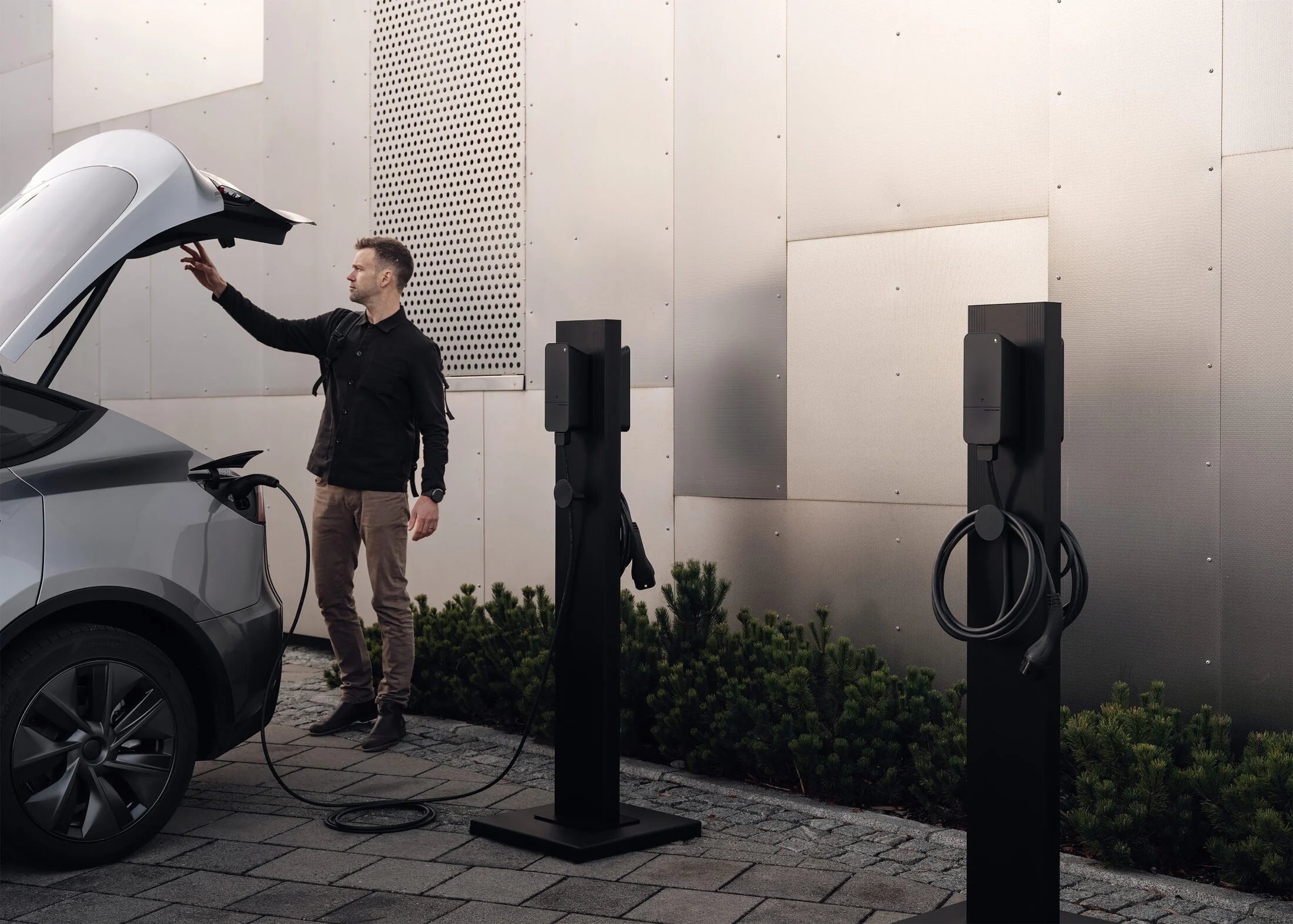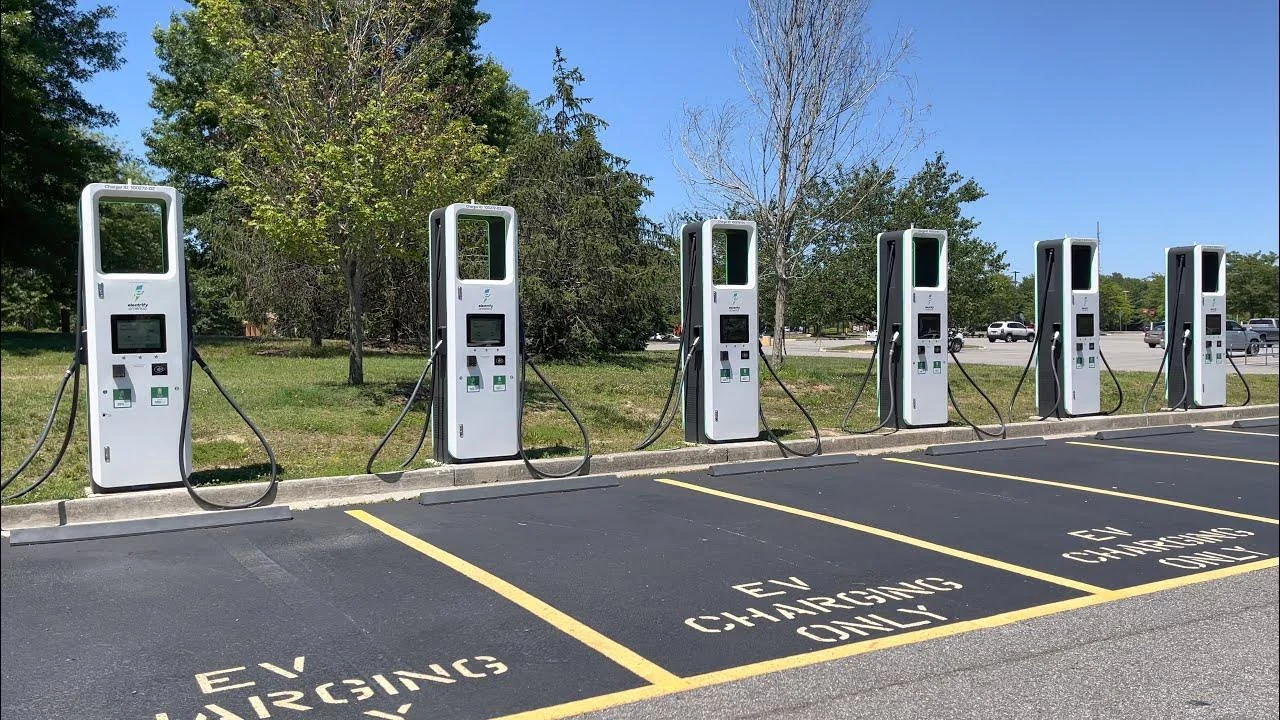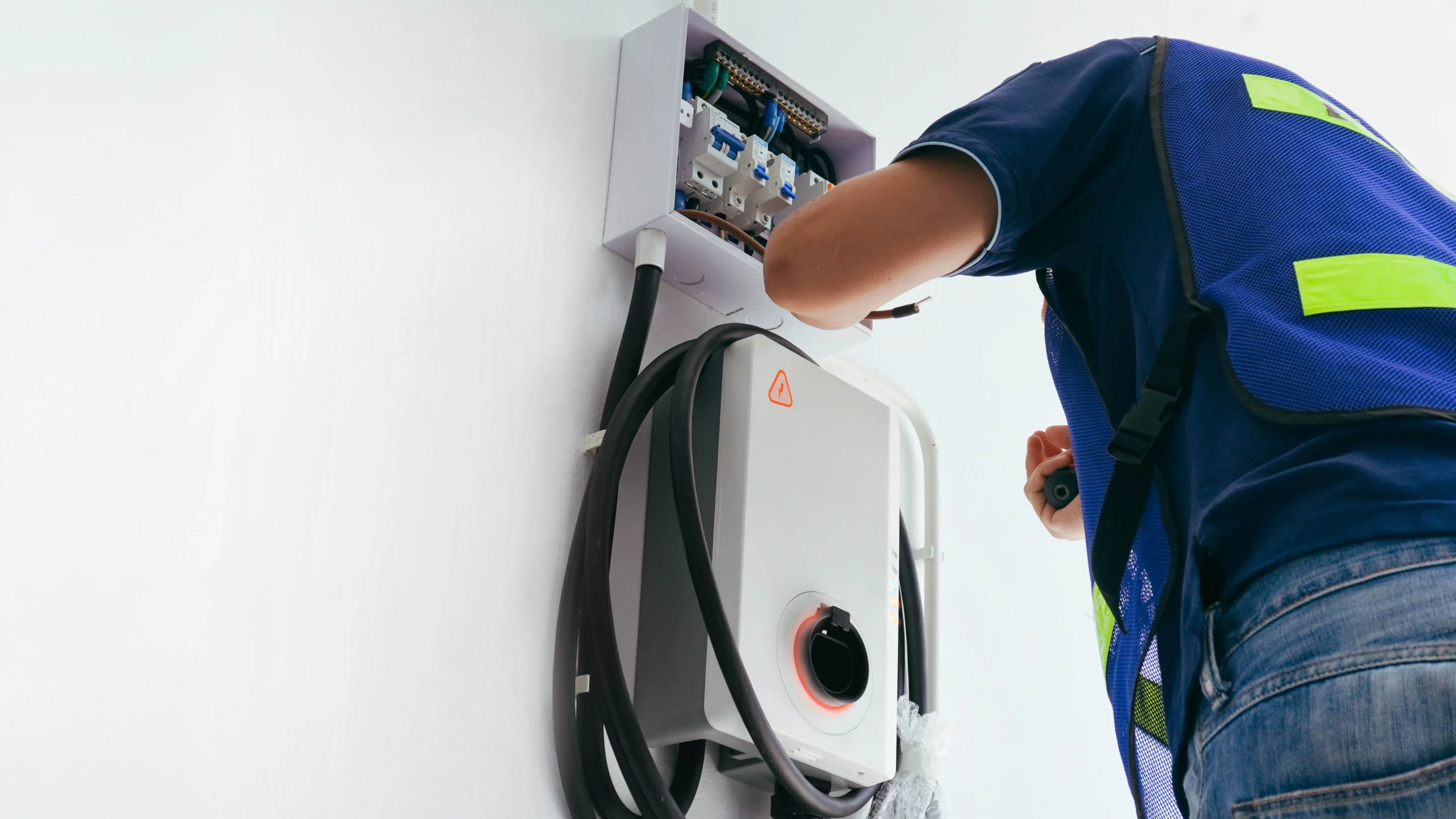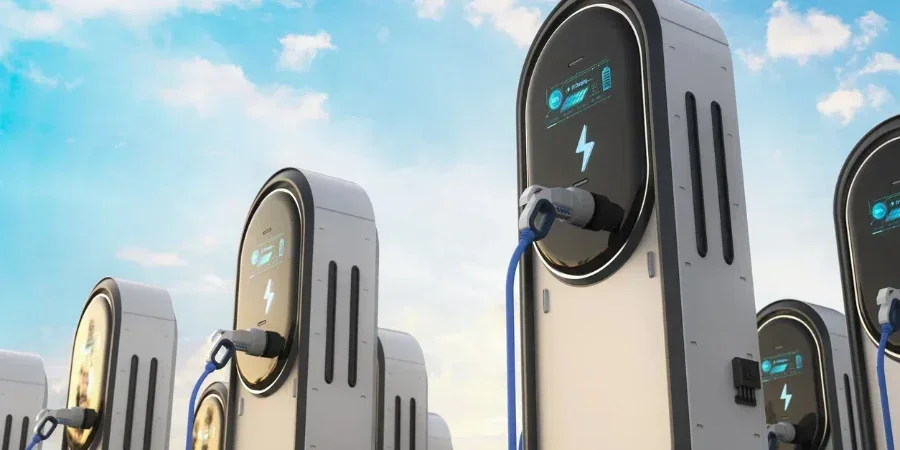As electric vehicles become increasingly popular across the United States, understanding EV charging safety has never been more critical. Whether you’re a new EV owner or considering making the switch to electric, knowing how to charge your vehicle safely protects both you and your investment.
Understanding EV Charging Basics
Electric vehicle charging involves transferring electrical energy from the power grid to your vehicle’s battery pack. Unlike filling up a gas tank, EV charging requires careful attention to electrical safety protocols. The process involves high-voltage electricity, sophisticated charging equipment, and various safety systems working together to ensure secure power transfer.
Modern electric vehicles use different charging levels, each with specific safety considerations. Level 1 charging uses standard 120-volt household outlets, Level 2 charging operates at 240 volts, and DC fast charging can involve 400-800 volts or higher. Each level requires different safety precautions and awareness.
Essential EV Charging Safety Tips

Pre-Charging Inspection
Before connecting your EV to any charging station, conduct a thorough visual inspection. Check the charging cable for any signs of damage, including cuts, burns, or exposed wires. Examine the connector for corrosion, debris, or physical damage that could affect the connection. Never use a damaged charging cable or connector, as this poses serious electrical hazards.
Inspect the charging station itself for any visible damage, error messages, or warning lights. Look for proper grounding connections and ensure the station appears stable and secure. If anything seems amiss, choose a different charging location.
Weather Considerations
EV charging station safety becomes paramount during adverse weather conditions. Most modern charging stations are designed to operate safely in rain, snow, and other weather conditions, but extra precautions are necessary.
During wet conditions, avoid standing in puddles while handling charging equipment. Ensure your hands are dry before connecting or disconnecting charging cables. While charging stations have built-in protection against moisture, water, and electricity, it’s essential to take these hazards seriously.
In freezing weather, charging cables can become stiff and more prone to damage. Handle them gently and allow extra time for the charging process, as freezing temperatures can affect both charging speed and battery performance.
Proper Connection Procedures
Always follow the manufacturer’s recommended connection sequence. For most EVs, this means parking properly, turning off the vehicle, and then connecting the charging cable. Ensure the connector clicks securely into place and that any locking mechanisms engage properly.
Never force a connector into the charging port. If it doesn’t fit easily, double-check that you’re using the correct adapter or connector type for your vehicle. Forcing incompatible connectors can damage both your vehicle and the charging equipment.
Home Charging Safety Considerations
Electrical System Requirements
Home EV charger safety starts with having an adequate electrical system. Most homes built before the widespread adoption of electric vehicles may require electrical upgrades to support Level 2 charging safely. This includes ensuring your electrical panel has sufficient capacity and that proper grounding systems are in place.
Circuit protection is crucial for safe home charging. Dedicated circuits with appropriate circuit breakers help prevent electrical overloads and reduce fire risks. Ground fault circuit interrupters (GFCI) provide additional protection against electrical shock hazards.
Installation Environment
Choose an appropriate location for home charging equipment. The area should be well-ventilated, protected from extreme weather, and easily accessible for regular use. Avoid installing charging equipment in areas prone to flooding or excessive moisture accumulation.
Ensure adequate clearance around the charging equipment for safe operation and maintenance. Keep the area free from flammable materials and maintain clear access to circuit breakers and electrical panels.
Regular Maintenance
Home charging equipment requires regular maintenance to ensure continued safe operation. Periodically inspect all connections for signs of wear, corrosion, or damage. Clean the charging connector and your vehicle’s charging port regularly to prevent debris accumulation that could affect proper connections.
Monitor the charging equipment for any unusual sounds, odors, or visible signs of overheating. If you notice any abnormalities, discontinue use immediately and consult with qualified electrical professionals.
Public Charging Station Safety

Station Selection
When using public charging stations, choose reputable network operators with well-maintained equipment. Look for stations that display current safety certifications and inspection dates. Avoid charging stations that appear damaged, vandalized, or poorly maintained.
Research charging network apps and websites that provide real-time information about station status, safety reports, and user reviews. This information can help you make informed decisions about which stations to use.
Personal Safety Measures
EV charging safety tipsfor public charging extend beyond electrical safety to personal security. Choose well-lit, populated charging locations, especially during evening hours. Many charging stations are located in shopping centers, restaurants, and other public areas that provide natural surveillance.
Stay alert to your surroundings while charging and keep your vehicle locked when possible. Most modern EVs allow you to monitor charging progress remotely through smartphone apps, reducing the need to remain at the charging station throughout the entire process.
Emergency Procedures
Familiarize yourself with emergency shutdown procedures for public charging stations. Most stations have clearly marked emergency stop buttons that immediately halt the charging process. Learn how to disconnect your vehicle safely in case of an emergency.
Keep emergency contact numbers readily available, including the charging network’s customer service line and local emergency services. Report any safety incidents or equipment malfunctions to station operators promptly.
Advanced Safety Technologies
Built-in Safety Features
Modern electric vehicles and charging equipment incorporate numerous safety technologies designed to protect users and equipment. These include ground fault protection, overcurrent protection, and thermal management systems that monitor temperatures during charging.
Communication protocols between vehicles and charging stations continuously monitor the charging process, automatically adjusting power levels or shutting down the system if any anomalies are detected. These intelligent safety systems significantly reduce the risk of electrical accidents.
Fault Detection Systems
Advanced charging systems employ multiple layers of fault detection to identify potential problems before they become dangerous. Voltage monitoring systems detect abnormal electrical conditions, while current monitoring prevents overcurrent situations that could damage equipment or create fire hazards.
Temperature sensors throughout the charging system monitor for overheating conditions that could indicate equipment problems or environmental issues. These systems work together to provide comprehensive safety monitoring throughout the charging process.
Common Safety Mistakes to Avoid

Improper Extension Cord Use
Never use extension cords with EV charging equipment unless specifically designed and rated for such use. Standard household extension cords cannot safely handle the electrical loads required for EV charging and pose serious fire and shock hazards.
If additional reach is needed for Level 1 charging, invest in a properly rated EV charging extension cord designed specifically for electric vehicle use. These specialized cords include appropriate safety features and electrical ratings.
Ignoring Warning Signs
Don’t ignore warning lights, error messages, or unusual sounds from charging equipment. These indicators are designed to alert you to potential safety issues that require attention. When in doubt, stop charging and seek qualified assistance rather than attempting to continue with potentially damaged equipment.
Pay attention to your vehicle’s charging indicators and dashboard warnings. Modern EVs provide detailed information about charging status and any detected problems that could affect safety.
Inadequate Ventilation
Ensure adequate ventilation around charging equipment, especially in enclosed spaces like garages. While electric vehicle charging doesn’t produce exhaust fumes like gasoline vehicles, proper ventilation helps prevent heat buildup and maintains optimal operating conditions for charging equipment.
Avoid covering or blocking ventilation openings on charging equipment. These openings are designed to maintain safe operating temperatures, and preventing proper airflow can lead to overheating and potential safety hazards.
Safety Standards and Certifications
Industry Standards EVv charging station safetyis governed by numerous industry standards and certifications designed to ensure safe operation. The Society of Automotive Engineers (SAE) publishes standards for EV charging protocols, while the National Electric Code (NEC) provides requirements for electrical installations.
Underwriters Laboratories (UL) certification ensures that charging equipment meets rigorous safety testing requirements. Look for UL-listed equipment and installations that comply with current electrical codes and standards.
Regulatory Compliance
Federal and state regulations govern various aspects of EV charging safety, from equipment standards to installation requirements. The Federal Communications Commission (FCC) regulates communication aspects of innovative charging systems, while the Department of Transportation oversees public charging infrastructure safety.
Local building codes and electrical codes may have specific requirements for EV charging installations. Compliance with these regulations is essential for safe operation and may be required for insurance coverage and warranty protection.
Future of EV Charging Safety

Emerging Technologies
The future of EV charger safety includes advanced technologies like wireless charging, which eliminates the need for physical connectors and reduces the risk of electrical accidents from damaged cables or improper connections. Vehicle-to-grid (V2G) technology introduces new safety considerations as EVs become capable of feeding power back into the electrical grid.
Artificial intelligence and machine learning technologies are being integrated into charging systems to provide predictive maintenance capabilities and enhanced safety monitoring. These systems can identify potential problems before they become safety hazards.
Smart Grid Integration
As electric vehicles become more integrated with innovative grid technologies, new safety protocols are being developed to ensure safe operation in increasingly complex electrical environments. This includes enhanced communication between vehicles, charging stations, and utility systems to optimize safety and performance.
Cybersecurity becomes an essential aspect of EV charging safety as charging systems become more connected and intelligent. Protecting against cyber threats that could compromise safety systems is an emerging area of focus for the industry.
Environmental Safety Considerations
Battery Safety
Electric vehicle batteries contain chemicals and operate at high voltages that require specific safety precautions. While regular operation poses minimal risk, damaged batteries can present serious safety hazards, including fire, toxic gas release, and electrical shock.
Never attempt to repair or modify EV batteries. If you suspect battery damage from an accident or other incident, keep the vehicle in a well-ventilated area away from ignition sources and contact emergency services and the vehicle manufacturer immediately.
Disposal and Recycling
Proper disposal and recycling of EV charging equipment and batteries are vital for environmental safety. Many components contain materials that require special handling to prevent environmental contamination.
Follow manufacturer recommendations for end-of-life disposal of charging equipment and batteries. Many manufacturers and retailers offer take-back programs for the proper recycling of EV-related equipment.
Frequently Asked Questions
Q1: Is it safe to charge my EV in the rain?
A: Yes. EVs and chargers are designed for wet conditions. Just keep your hands dry and avoid standing in puddles.
Q2: Can I use a regular extension cord with my EV charger?
A: No. Only use extension cords rated and designed for EV charging.
Q3: What should I do if I smell burning while charging?
A: Stop charging immediately, disconnect if safe, and call a professional or emergency services.
Q4: How often should I inspect my charging equipment?
A: Do a quick check before each use and a thorough inspection monthly. Look for wear, damage, or corrosion.
Q5: Is it safe to leave my EV charging overnight?
A: Yes. EVs are built for overnight charging, as long as the equipment is installed correctly and maintained.
Q6: What if my charging cable gets stuck?
A: Make sure the car is unlocked, follow the standard release method, or use the emergency release in the manual. Never force it.
Conclusion
EV charging safety is fundamental to the successful adoption and enjoyment of electric vehicles. By understanding proper safety procedures, maintaining charging equipment, and staying informed about best practices, EV owners can enjoy the benefits of electric transportation while minimizing risks.
The electric vehicle revolution is transforming transportation, and safety remains the top priority. By following these comprehensive EV charging safety tips and staying informed about evolving technologies and standards, you contribute to a safer electric future for everyone.
Ready to learn more about EV charging safety or need expert electrical guidance? Contact qualified electrical professionals in your area who specialize in electric vehicle charging systems. Proper installation and maintenance of EV charging equipment is essential for safe operation and long-term reliability.
